Writing for the Gaps: A Richard Fairgray Guest Post
What’s all this I hear about people banning books with LGBTQIA+ content? Seems a bad idea. I’m not a fan.
What am I fan of? Well, Richard Fairgray, for one. You may know him best for his marvelous, miraculous, thoroughly creepy Black Sand Beach series (which, at this point, my son has read more of than I have). I’m also a big fan of his work on the Cardboardia series that he makes with Lucy Campagnolo. But one book I hadn’t heard of before was Four-Color Heroes.
Now, I don’t do anything with YA titles on this blog usually. But there are exceptions to every rule and for Richard and this content? I’m making an exception.
Today, Richard is guest posting. I hope you give him a moment of your time:
Writing for the Gaps
by Richard Fairgray
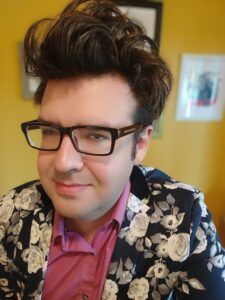
There’s traditional wisdom that floats around in writing circles about “giving things time” and “writing with objectivity.” Last night, I saw a show that felt like it needed that. The recollections of high school written by someone less than 8 years out of it felt both smoothed over and jagged, asking for an understanding from an audience who just weren’t there. With time, with a second pair of eyes on it, the show could have become a universal exploration of what the writer’s high school had been like, as well as what every person in the audience’s high school had been like.
ADVERTISEMENT
ADVERTISEMENT
Then, there was the song.
Right at the climax of the show, a boy sings a song in a talent show that I’m absolutely convinced the writer wrote and/or sang in high school. It broke my heart and tied every other piece together. The artifice of the dialogue before and after suddenly made sense. These were kids playing at being okay. Of course, they could only ever say exactly what they were going through; they didn’t have the perspective of adulthood to cloud it with metaphor.
If that song had been written now, by someone trying to capture some feeling from their forgotten or obfuscated past, the whole thing would have died on the stage (although, maybe that’s exactly what the playwright did and I’m just giving them less credit than they deserve).
Either way, the point I’m circling is that writing – be it for stage, film, prose, or comics – feels the best when it can capture that immediacy, even if the larger narrative is bathed in objectivity.
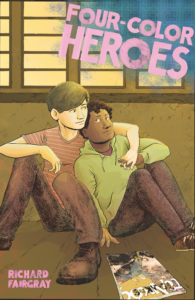
I wrote a comic a while back called Four-Color Heroes. It’s about two boys falling in love through comic books. One boy (Oscar) is from a deeply religious family and isn’t even allowed to look at comic books (or any unapproved media), so his new friend Patrick (labeled from day one as a “bad kid” by all around him) sees a loophole: Oscar won’t need to look at the comics if Patrick just describes them to him.
Throughout the book, the reader never sees the real superhero book they talk about, only how Oscar imagines it with the excitable narration of his teenage friend. As their lives get complicated and external forces are pulling them farther apart, every month they have this reason to come back together and talk about something easier than the real world.
I’ve had this story for a long time. There were earlier iterations where it was mostly about the superhero art – a long-winded way for me to explore the history and development of comic styles, using the mind of a naive boy to reflect the shifting tastes of comics fans across decades. I’m glad I gave this book the time it needed, because that version would have been utterly turgid. Instead, I found the important parts of the real world that I wasn’t seeing in other books on my shelf. I found a gap to write about that wedged the story into a time and place that too often gets glossed over.
Writing Queer stories is a delicate balancing act. There’s a tweet I often quote whose author I can’t recall that says, “Congratulations, you have a gay character. Have you decided how you’re going to kill them off yet?” I love this tweet, because it so perfectly encapsulates the media of the time. We got our representation, but never in a way that we couldn’t be extracted quickly to not make a fuss, or used as a teachable moment for a bigoted character when they realized that – against all odds – the death of a gay person made them sad.
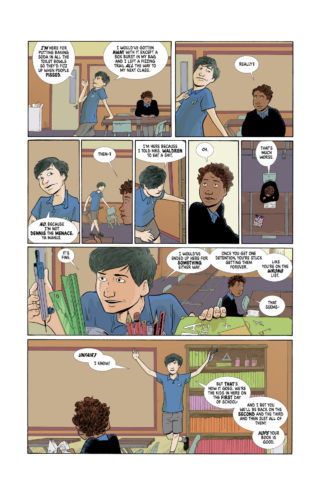
That approach is less common, almost gone at this point (Or, I’m just reading better things. Don’t email me.) and has largely given way to the “I came out and now the world is rainbows and sparkles” trope. Maybe I’m an old grump, but I liked it better when they were killing us off (in stories).
But, here’s where I see the gap: The gay character died and the intolerant person got sad, and now they love all gays, and see they were human all along blah blah blah…but where’s the other bit? Where’s the part where they slowly stop saying slurs and get really proud of themselves for every time they get someone’s pronouns right and have to call their son to brag? (Sorry, Mum.) Where’s the part where they meet 30 different people from the LGBTQIA+ spectrum and gradually expand their newfound inclusivity to actually include most of those people? (Not hoping for miracles, right?) Where’s the first time they tell someone off for calling someone a fag or telling their son to not “be such a girl,” and they have actual social repercussions and have to balance whether that’s worth it to them?
More importantly, where are the stories of that whole period from the nuanced and defined queer characters’ perspective? It seems unfair that we gave them agency and then didn’t give them any time to wield it.
I want more stories where the queer characters can be something other than perfect or dead.
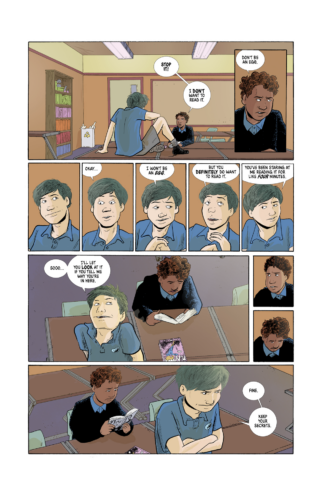
Four-Color Heroes is about two boys falling in love who don’t even have the language to explain it yet. They kiss once and both spiral, but for different reasons. They know they need each other and they know they can’t break free from their real lives, and over months of new comic books being released, they find ways to grow without ever confronting it head on. But, this isn’t a coming-out story.
If you asked any character in the book to describe Patrick, they would all call him the gay one. It’s 2004, a time when it was okay to be gay… just not too gay. Patrick can be flamboyant and have his green hair (but a tasteful shade), he can move with poise and grace and get excited about his men in spandex and capes, and everyone around him will know he’s gay… he just better not say it himself.
That’s the gap. That’s the time people forget about. That’s the slow boil where the one gay character on sitcoms would still date women depending on which staff writer was handed the ball that week. That was the part where gay kids would watch and read and feel seen and then feel betrayed just as quickly when a casual line was put in about an off-screen wife and kids. This was before “queer baiting” with straight characters and the mass profitability of healthy representation. This was the messy part where being gay technically “wasn’t that bad.”
I don’t have a snappy conclusion to this, because that’s sort of the point.
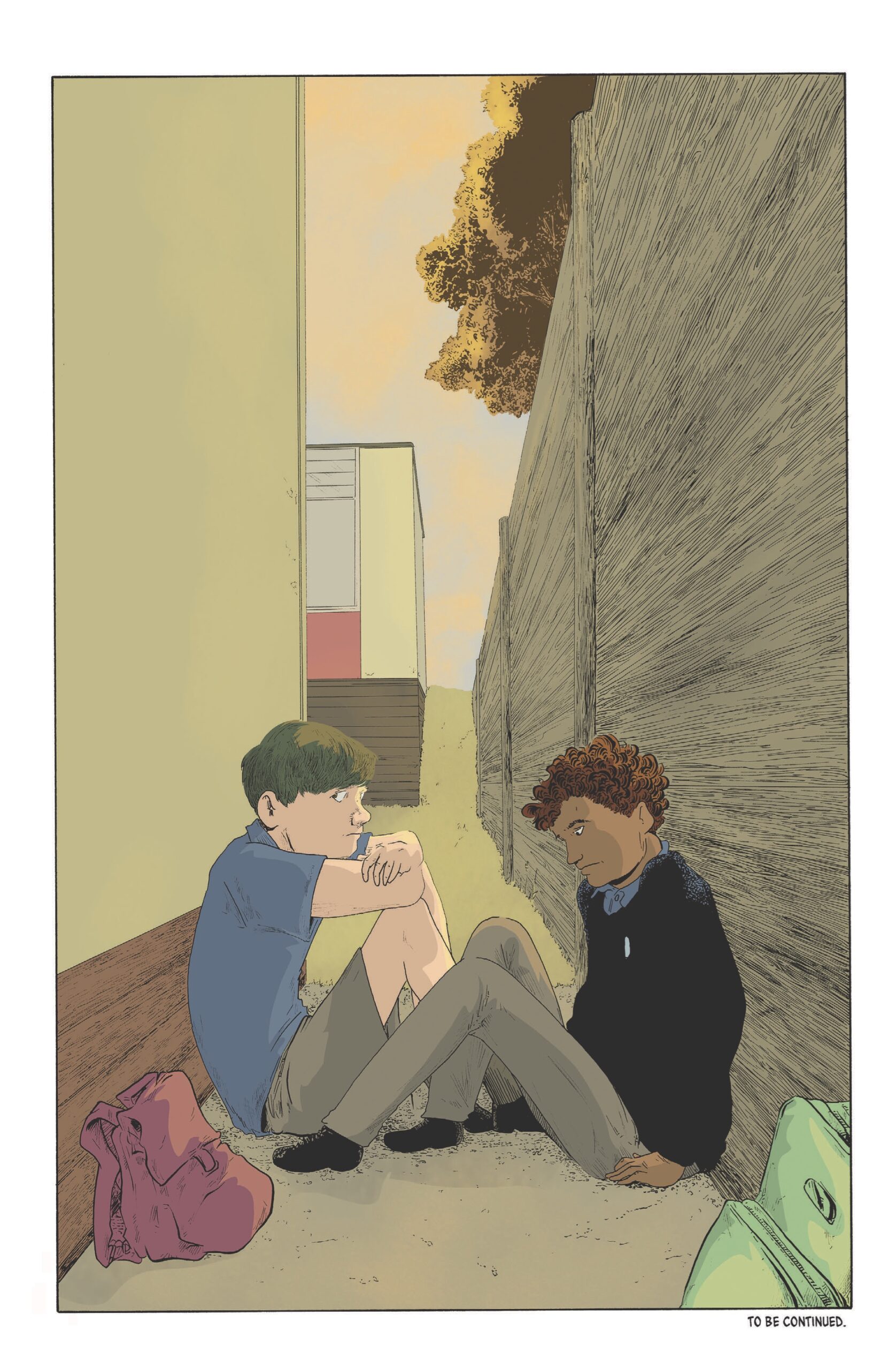
About Four-Color Heroes
ADVERTISEMENT
ADVERTISEMENT
Written and illustrated by Aotearoa/New Zealand-born creator Richard Fairgray (Black Sand Beach), Four-Color Heroes is an LGBTQIA+ coming-of-age graphic novel set in a New Zealand high school during the passing of the Civil Union Act 2004. As tensions rose nationwide over the basic equal rights of same-sex couples, two boys were fighting a battle on a smaller scale, against enemies from within and without, as they found love and self-discovery through the pages of a comic book.
The graphic novel features a foreword by GLAAD Award-winning writer David M. Booher (Killer Queens, Canto), as well as an essay by clinical psychologist and media consultant Dr. Drea Letamendi on protecting the mental health of LGBTQIA+ youth.
Four-Color Heroes is available in print through Fanbase Press (www.fanbasepress.com) and Amazon, and digitally in both English and te reo Māori via Hoopla, Comics Plus, Google Books, and Google Play. For more information on Four-Color Heroes, please visit www.FourColorHeroes.com or www.fanbasepress.com, as well as Facebook (/FourColorHeroes) and Twitter, @4ColorHeroesGN.
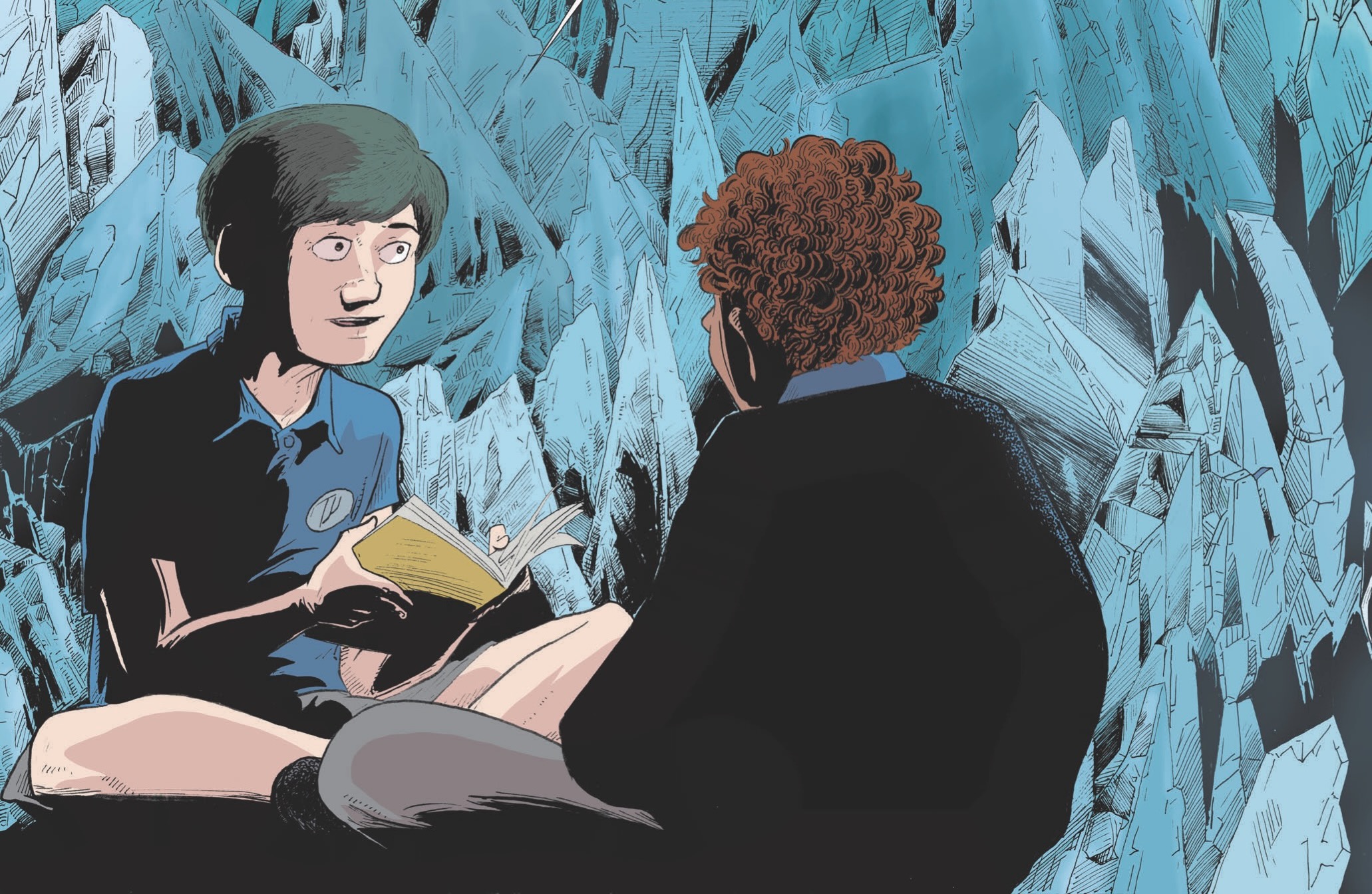
About Richard Fairgray
Born and raised in Aotearoa/New Zealand, Richard began writing and publishing comics at 7. By the time he left for America at 30, he had over 200 titles to his name. His work ranged from children’s books like Gorillas in Our Midst, My Grandpa Is a Dinosaur, and If I Had an Elephant, to graphic novels and ongoing comics like Ghost Ghost and Blastosaurus.
Arriving in America with a big box of cash, a plastic skeleton, and 12 pairs of shoes, Richard soon found himself living in a converted shopping mall in the center of Hollywood with no real plan other than to just keep making stuff. He landed a publishing deal his first week, then another in his second, and has since put out several more books, including a rebooted Blastosaurus, the middle-grade horror series Black Sand Beach, the ongoing mature comic Haunted Hill, and a myriad of other books for publishers large and small.
Richard splits his time between his home in Hollywood and his spare home in Canada, where he keeps his husband and dogs. He works 18 to 20 hours every day, his back always hurts, and what tiny amount of vision he has is going to be gone soon, so he has to get a lot of work done right away.
Dang, I like that guy.
Four-Color Heroes is available in print via Fanbase Press and Amazon and digitally via Hoopla, Comics Plus, Kindle, Google Play, and Google Books. Many thanks to Barbra Dillon for helping to set this up and for Richard for taking the time to put this piece together.
Filed under: Guest Posts
About Betsy Bird
Betsy Bird is currently the Collection Development Manager of the Evanston Public Library system and a former Materials Specialist for New York Public Library. She has served on Newbery, written for Horn Book, and has done other lovely little things that she'd love to tell you about but that she's sure you'd find more interesting to hear of in person. Her opinions are her own and do not reflect those of EPL, SLJ, or any of the other acronyms you might be able to name. Follow her on Twitter: @fuseeight.
ADVERTISEMENT
ADVERTISEMENT
SLJ Blog Network
Magda, Intergalactic Chef: The Big Tournament | Exclusive Preview
Fifteen early Mock Newbery 2026 Contenders
When Book Bans are a Form of Discrimination, What is the Path to Justice?
Poetry Gateways, a guest post by Amy Brownlee
ADVERTISEMENT







